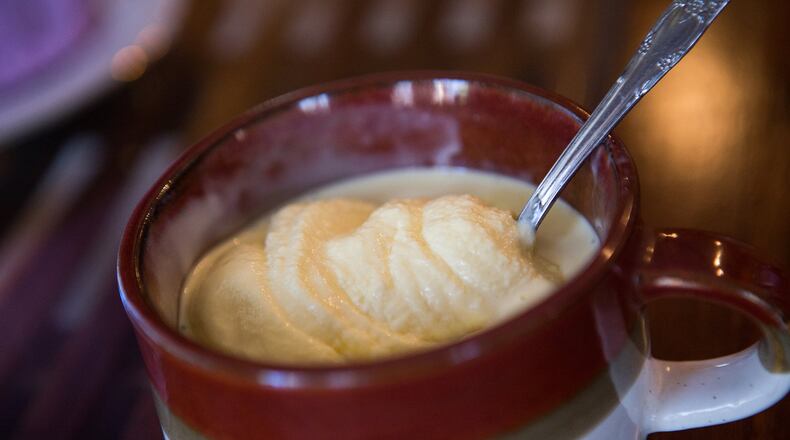Story by Thomas Bell. Photos by Jenni Girtman.
Jennifer Harvey took her first trip to Italy after graduating from high school in 2001. Her mother, Anna Marie Harvey, grew up in a small town outside Cassino, a commune in Southern Italy, before immigrating to the United States. When Harvey visited, she discovered gelaterias, little gelato shops that seemed to be on nearly every street corner.
She fell in love with gelato for its decadent taste, but also for how it seemed to express the Italian values that were flourishing within her.
“Everything about the culture is exactly me,” she says. “Very caring, very nurturing, very simple, but powerful.”
Years later, living in Atlanta, Harvey was invited by a friend to a chili cook-off party, which included a “cookie chill-off” for the best ice cream sandwiches. Harvey had never made her own ice cream or gelato, but bought a basic Cuisinart ice cream maker and started experimenting. Her entry was a vanilla bean lemon gelato served on ginger snap cookies that won second place.
The experience inspired Harvey to learn more about the dessert. She studied the chemistry and physics of gelato, the balancing acts of sugars and fats, the thermodynamic properties of different kinds of sugar. And then one day she wondered, “Can I just go to a school and learn this?”
In 2016, Harvey spent a month in Bologna, Italy, studying at the Carpigiani Gelato University. In addition to making traditionally sweet gelatos, she learned how to make savory ones, including a salmon gelato that she is still obsessed with perfecting.
Back in Atlanta, Harvey returned to her longtime job as a server and bartender at La Tavola in Virginia-Highland, where her employer supported her continued growth as a gelato creator.
Harvey isn’t sure what comes next for her on her gelato journey, but she’d like to start a gelato catering business, pairing sweet and savory gelatos with other foods. She’s committed to gelato as a creative, expressive art that fires up her heart. “With your passions, with your dreams, you have to feed them,” she says.
Fortunately for Atlanta diners, her passion is to feed others.
Insider tip
For savory gelatos, use trehalose in place of other sugars. It lowers the freezing temperature of the mixture without adding as much sweetness.
Old style organic custard gelato
Harvey’s take on a traditional organic custard gelato requires no special ingredients and can be made with or without an ice cream maker. Measure ingredients by weight rather than volume for best results. This yields a little less than one pint.
515 grams organic whole milk
150 grams organic sugar
100 grams organic egg yolks
Heat the milk in a pot over medium-low heat.
Add sugar and stir until dissolved completely.
Temper the yolks in a bowl by gradually adding the heated milk and sugar mixture while whisking.
Return all ingredients to the pot and continue to cook over medium-low heat. The custard is done when you can dip a wooden spoon vertically into and out of the mixture, then draw a solid line down the spoon with your finger.
Cover and chill the mixture completely.
To freeze in the traditional method, fill a jar with the custard mixture, leaving room for the mixture to expand. Seal the jar completely. (Use duct tape to be sure, or you’ll risk having a mess to clean up and, even worse, wasted gelato.) Fill a large coffee can halfway with ice. Place the jar in the coffee can, then fill the rest of the can with ice. Cover and seal the can completely and securely. Shake the can or have the kids roll it back and forth on the floor for 20-30 minutes. Then open and serve immediately.
About the Author
Keep Reading
The Latest
Featured


